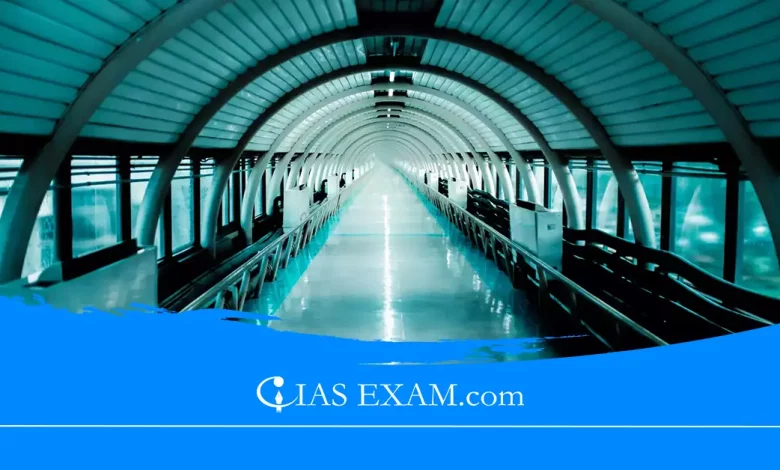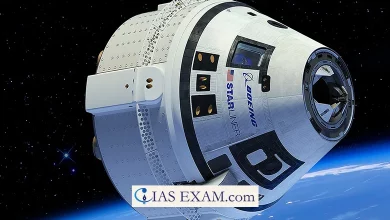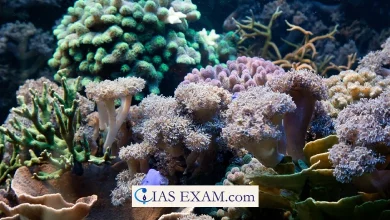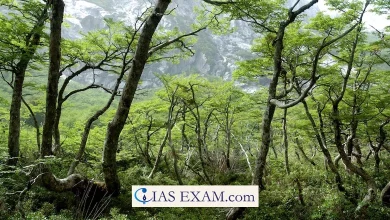Daily Current Affairs for UPSC
India’s First Underwater Metro Tunnel
Syllabus: Infrastructure, Indian Economy [GS Paper-3]

Context
The Prime Minister inaugurated the Esplanade-Howrah Maidan section of the Kolkata Metro, and dedicated to the nation the first underwater transportation tunnel in the country.
Key Points
- India has recently opened its first underwater metro, marking a significant milestone in urban transportation.
- This engineering marvel demonstrates advanced technology and improves connectivity between Kolkata and Howrah.
- It not only boosts the local economy but also provides a sustainable transportation option.
- However, there are challenges in terms of safety and maintenance, and the project comes with high costs.
- It is only when the underwater metro is integrated with the already established systems of transport and acceptable to the people will it be viable.
Details about the Underwater Metro Tunnel
About
- India’s first underwater metro was inaugurated in Kolkata on March 6th, 2024.
- This historic engineering landmark is 16.6 km long, including an astonishing 520 m beneath the Hooghly River.
- It connects the twin cities of Kolkata, Howrah, and Salt Lake, and comprises six stations, of which three are substantial.
- It features the deepest metro station in India at Howrah.
- The underwater section is 4.8 km long, connecting Howrah Maidan to Esplanade, forming part of the East-West Metro corridor.
- This project is a significant advancement in India’s infrastructure, improving commuting in Kolkata.
Advantages
The advantages of Kolkata’s underwater metro include:
- Improved Connectivity: It bridges Kolkata with its twin city, enhancing travel efficiency between key areas.
- Time-Saving: The underwater section shortens travel time significantly.
- Environmental Benefits: It offers a greener, more sustainable transport option, reducing reliance on motor vehicles.
- Economic Growth: Boosts local economy by improving accessibility and fostering business opportunities.
- Advanced Technology: Represents a technological leap in Indian infrastructure, showcasing innovative engineering.
- Reduced Traffic Congestion: Eases surface traffic, contributing to less congestion and pollution.
- Enhanced Safety: Offers a safe and reliable mode of transportation.
- Tourist Attraction: The uniqueness of the underwater route adds to its appeal as a tourist attraction.
Disadvantages
The potential disadvantages of Kolkata’s underwater metro, similar to any major infrastructure project, might include:
- High Costs: The construction and maintenance of underwater structures can be expensive.
- Environmental Impact: The construction phase could have effects on the local ecosystem, especially in the river.
- Technical Challenges: Underwater construction poses unique engineering challenges and requires specialised expertise.
- Risk of Water Ingress: Ensuring a completely waterproof structure is critical to avoid risks of flooding.
- Limited Options for Future Expansion: Construct might have limited options for future expansion or modification since it is built explicitly for underwater placement.
- Emergency Evacuation Complexity: The safe and efficient emergency evacuation from an underwater tunnel may prove more complex than the same activity in above-ground structures.
Challenges
The challenges in developing and operating Kolkata’s underwater metro include:
- Technical and Engineering Challenges: Construction and maintenance works under the object of underwater structure require sophisticated engineering solutions.
- Environmental Concerns: Ensuring minimal impact on the river’s ecosystem during construction and operation is vital.
- Cost Implications: High costs for construction, maintenance, and technology upgrades.
- Safety and Security: Lay down rigorous, well-thought-out measures of safety in the handling of emergencies, more so the underwater environment.
- Public acceptance and utilisation: Public acceptance and use shall be encouraged and ensured to effectively integrate them into the existing network of transport.
- Long-Term Sustainability: Balancing immediate transport needs with long-term environmental and economic sustainability.
Conclusion
- The underwater metro at Kolkata actually reflects an engineering marvel towards urban transportation in unison with environmental consciousness.
- However, the benefits of the project in respect of connectivity, reduction of traffic, and development in the economy are always accompanied by the following project obstacles: high costs of implementation, environmental issues, and issues with safety.
- Its success proves one of the blueprints from which infrastructure projects into the future may take cue, focusing on the necessity of technology with sustainable practices.
Source: Hindustan Times





.png)



